3 Signs Safety Software Might Be The Solution For You
Safety software is a relatively new solution to an old problem. Have you ever thought to yourself, there has got to be a better way to stay complaint with safety regulations? Do you ever get frustrated that you have to fill out so many assessments and statements on paper. Do you find yourself missing things in your assessments because you are worried that it’s not in the right format?
These are just some of the frustrations that come with the process of staying compliant with safety regulations. It can have significant effects on your safety culture if you find the process of safety too difficult. If you have ever ran into any of the above, it might be time to consider finding a solution before it becomes too much of a headache that safety goes out the window and all your effort is spent just to be compliant.
In this article we will cover in depth 3 signs that it might be time to consider utilizing safety software before your safety is ignored for compliance.
You’re worried about compliance incase of an incident
Running a business is no easy task. It’s like juggling 10 things at once. When things are going well, it’s a great feeling. But it only takes one slip up or incident to cause everything to come crumbling down. The stress and anxiety of a WHS incident happening in your business is enough to keep anyone up at night. On top of that, if you know you might get slapped with a fine after the incident you’ll always be stressed or worse, you’ll delay reporting an incident. This can lead to huge fines and even jail time. No one wants that.
Safety compliance in the modern day is no simple task. There are a lot of regulations and legislation that you must adhere to in your day to day business. This can become quite a headache and adds to the stress of making sure you have ticked all the boxes. Or worse, leads you to ignoring your requirements and hoping that an incident doesn’t occur. As we have covered in a previous article, incidents happen to even the best of employers who are proactive with safety, its simply the reality of probability. If there is a chance, eventually it will happen.
Ask yourself this. If there was an incident at your workplace tomorrow and it lead to an inspection, would you be confident you would pass? Have you got a solid and refined risk assessment process in place to identify, assess and control risks in your workplace?
If the answer is not a confident yes then it might be time to look at solutions. Safety software like our platform SafeWorkPro allows you to focus on your process more while making the document compliance side of things a worry of the past. While SafeWorkPro won’t solve all of your safety worries, it will help you be more effective with your time so you can spend less time filling out forms and more time focusing on the actions that lead to a safer workplace. We have talked about how your process is more important than your documents in a previous article. In the eyes of the law, the concern is about what you actually do to keep people safe.
If you want to spend more time on safety and less time on the books, then safety software might be the solution for you.
Safety software makes documentation simple and easy
How long does it take you to complete a risk assessment from start to finish? What about a SWMS? Do you find it difficult to complete documents because of all the back and forth that is required between the site, office and in between your workers? If your documentation process is top notch and you have no issues with filling out lengthy paper documents then this might not apply to you. But for those that get frustrated with how much time away from work they have to take to complete documents, this one might be for you.
When the bottle neck for starting a job is the paperwork you need to complete for safety compliance it can become frustrating. It can sometimes feel like too much time is being wasted on paperwork when you could be working. This can lead to rushing through it which defeats its purpose. It also means that you are more likely to skip the processes that really matter to keep people safe.
If you are on a site that needs a SWMS and something changes that requires you to re-evaluate your SWMS, the process starts again and the tools are down until it is done. With safety software, the process of completing documentation is significantly easier. In principle, it is the same but in practice you’re saving time that would otherwise be spent filling a document and running around to get it signed. SafeWorkPro’s simple form based builder allows you to build custom documents which are super simple for your workers to complete on site when needed.
Save the hassle of the back and forth trying to get your documents read and signed by those on site. Have workers fill and sign documents from anywhere on site and have them submitted to the cloud for you to review from any location. SafeWorkPro even lets you get notifications when certain actions happen like a risk rating on a risk assessment matrix being too high or an incident is submitted. SafeWorkPro can help you save time on compliance and let’s you focus on what you do best.
Safety software helps you find old documents quick
Ask yourself this, can you find your risk assessment or SWMS from a job 2 years ago? If you were audited, could you produce it? This is something that isn’t obvious until it is an issue and by then it’s too late. How much of an impact on your day to day operations would a surprise audit have? Would you need to go digging through the back office folders to find the documents required? What a headache!
Even while you are on site, your documents like a SWMS need to be available for everyone to see. While they are there, they are likely to get damaged or degraded by weather. Sometimes, by the time they get stored for safe keeping they are almost falling apart.
With the safety of cloud document storage, SafeWorkPro can store all of your important documents online forever. With all of your documents in one place and neatly organized it’s super simple to find the documents you need, even if they are from years ago. Our software also makes audits quick and easy with next to no disruption in your operations. Export all of the data from your SafeWorkPro site for review without having to spend hours digging through folders, photocopying and physically delivering documents.
Conclusion
If any part of this article resonates with you, it might be time to consider trying out a better solution to using a manual safety process. Beyond just the convenience, SafeWorkPro can help you focus your time on the actions that truly make people safe, not just the actions that make you compliant. At the end of the day, that is what you will be judged on if you have an audit or investigation. Documentation is required of course, but that is simple the surface level when it comes to safety.
If you want to learn more about how SafeWorkPro could help you in simplifying your WHS, reach out to our friendly expert staff for a free, no obligation live demo.
Meet The Regulators: Workcover NSW
Workcover NSW is part of the Safety, Return to Work and Support Division (SRWSD) of the New South Wales state government. It is responsible for the determination of the general policy and strategic direction of not only Workcover NSW but also the Motor Accidents Authority of NSW and the Lifetime Care and Support Authority of NSW. In many ways, Workcover NSW could be considered the peak regulatory body in the department of workplace health and safety, under the model of Safe Work Australia.
The decision-making body that directs Workcover NSW is comprised of four other amalgamated boards previously active in New South Wales’ safety management. Their role is to determine the future investment policies for a number of funds that fall under Workcover NSW’s mandate. On top of that role, Workcover NSW aims to improve the state’s economic competitiveness by enhancing productive health and safety practices in workplaces.
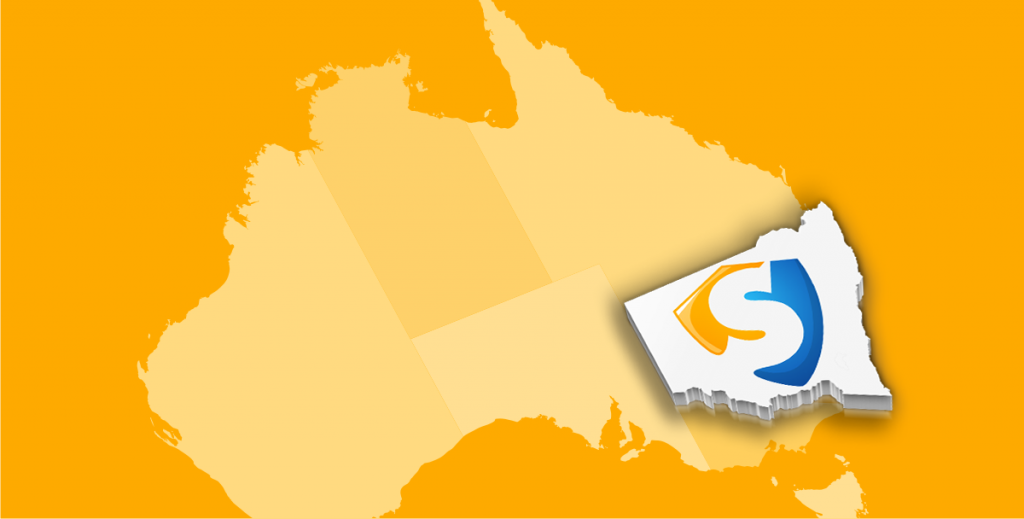
Responsibilities
- Work health and safety: establish and maintain harmonised and consistent occupational health and safety laws, and facilitate cooperation between inter-state business and non-government organisations.
- Licensing and registration: management of New South Wales’ high risk activities permits, licenses and registration including construction induction cards, notifications and relevant fees.
- NSW workers compensation insurance: the provision of financial protection to workers and their employers in the event of a workplace injury or illness.
- Workers compensation claims NSW: investigations into reports of incidents or injury, claims for workplace compensation, distribution of benefits and dispute resolution or prevention.
- Worker rehabilitation and return to work: provides assistance for employers seeking to support workers as they return to work after a workplace injury or illness.
Compliance and Enforcement
Workcover NSW has many compliance and enforcement options at its disposal should such action be necessary. These include:
- Compilation of information: the legal ability to obtain information from any person or organisation reasonably believed to be related to or able to give evidence about a suspected break of the Work Health and Safety (WHS) Act. For more information on this point, read the related legislation here.
- Enforceable undertakings: a legally binding agreement which determines that a person is obliged to carry out pre-determined requirements outlined in the undertaking. Typically used as an alternative to prosecution.
- Prosecution and court proceedings: the ability to pursue legal charges against a person or organisation suspected of breaching the WHS Act.
For more information on Workcover NSW, head to their website at www.workcover.nsw.gov.au.
It’s Time To Get Serious About Health and Safety in Australia
Workplace safety issues are not always at the top of people’s priorities. Often left to the last minute or delegated down, occupational health and safety is seen as the last kid you’d pick in the schoolyard footy team. Yet with the right amount of teamwork and training, that kid could very well score the game-winning try.
Knowing how to provide a safe working environment means more than workplace safety training and toolbox talks. In the midst of multiple risk assessment forms and red tape, it is all too easy to forget that safety is about people not paperwork. A person conducting a business or undertaking (PCBU) is responsible for the health and safety standards of any workplace or worksite, but the buck does not stop there. Safework is something everyone needs to practice.
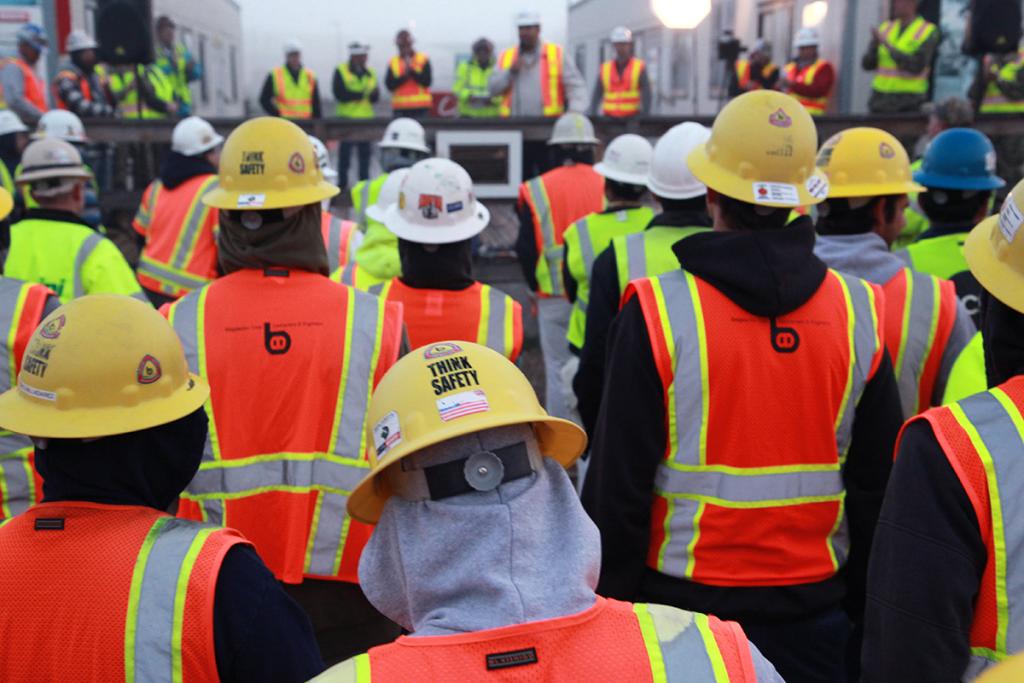
A strong health and safety program is one that encompasses all levels of a business in way that encourages communication and consultation between workers and employers. Risk assessments and other forms of risk management are indeed important factors but they alone cannot account for the diverse range of safety hazards facing all types of businesses. This causes problems because if risk assessments alone cannot provide the solutions people need, then they will attempt to solve OHS problems themselves. Without proper supervision this leads to unsafe work practices.
So where does that leave the occupational health and safety kid in our imagined schoolyard footy team?
The team can either involve this kid in their training regime, finding out what position best suits his level of talent and employing his skill set where it’s needed most. Or the team can simply leave the kid out in the backs and hope he doesn’t cause too much damage. One of these options has clear long-term benefits for the footy team. With the other option, it is just a matter of time before someone slips through the defences.

How can safety improve productivity?
There are many answers to this question depending on what industry you ask, but for construction workers the solution is quite clear. SafeWorkPro offers a streamlined, automated digital alternative to the traditional paper based method of risk assessment. It’s a simple mobile tool that will help turn the kid everyone picked last for footy into the fastest and strongest player on the field.
So why not try SafeWorkPro for yourself? You can sign up for a free trial today!
How to Write a Risk Assessment
It seems like a straightforward process but risk assessments are a crucial part of displaying compliance with OHS laws and regulations. Without risk assessment forms there is no way for the relevant workplace health and safety regulator to determine if you have even attempted to maintain compliant OHS standards. Free risk assessment templates will give you a broad idea of what blank risk assessment forms look like but they won’t do the job for you. Knowing how to perform a risk assessment is relatively straight forward but getting it right involves several steps.
1: Hazard and Risk Identification
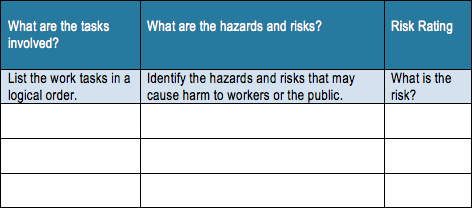
Risk assessments in the workplace should identify hazards through:
- Simple observation
- Consultation with workers and trade unions
- Checking the manufacturer’s instructions for equipment safety
- Reviewing accident and health/safety records
2: Identify who could be harmed
3: Decide on a risk assessment plan
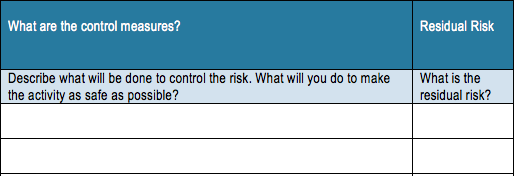
Implement a risk management process that either eliminates the identified hazards or controls them within reasonable practice. This can be achieved by:
- Eliminating the hazards all together (level 1 risk control)
- Minimising the risks by isolating the associated risk or substituting it with a lower risk (level 2 risk control)
- Reducing risks by implementing behavioural and administrative controls, and by using personal protective equipment (level 3 risk control)
For more information on risk assessment plans, read about the risk management framework.
4: Record the findings on a risk assessment form
- To be compliant with OHS legislation Australia, specifically the WHS Act, risk assessments forms must be completed and signed by all duty holders (anyone with access to the worksite).
- Refer to the risk assessment matrix to gauge a numerical value on the hazards and the associated risks (see risk assessment matrix example below)
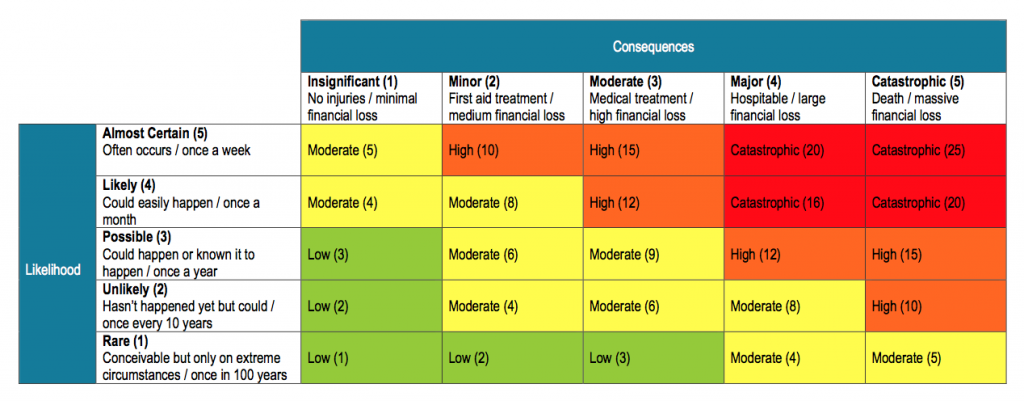
5: Review the risk analysis report
For more information, SafeWorkPro provides various risk assessment templates as well as other health and safety risk assessment forms. But ultimately risk assessment paperwork is time consuming and does not help you improve productivity. Risk assessment software streamlines this entire process into one simple tool available for download today. You can learn more about SafeWorkPro here.





